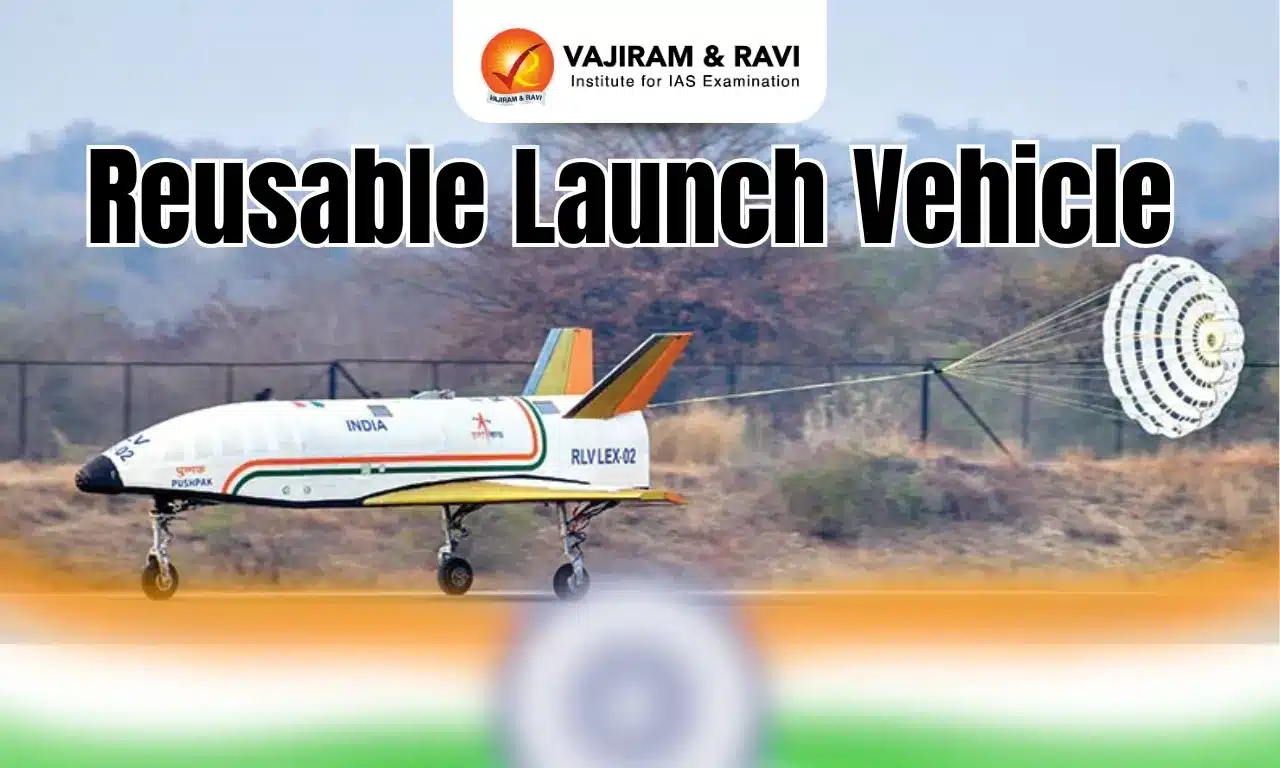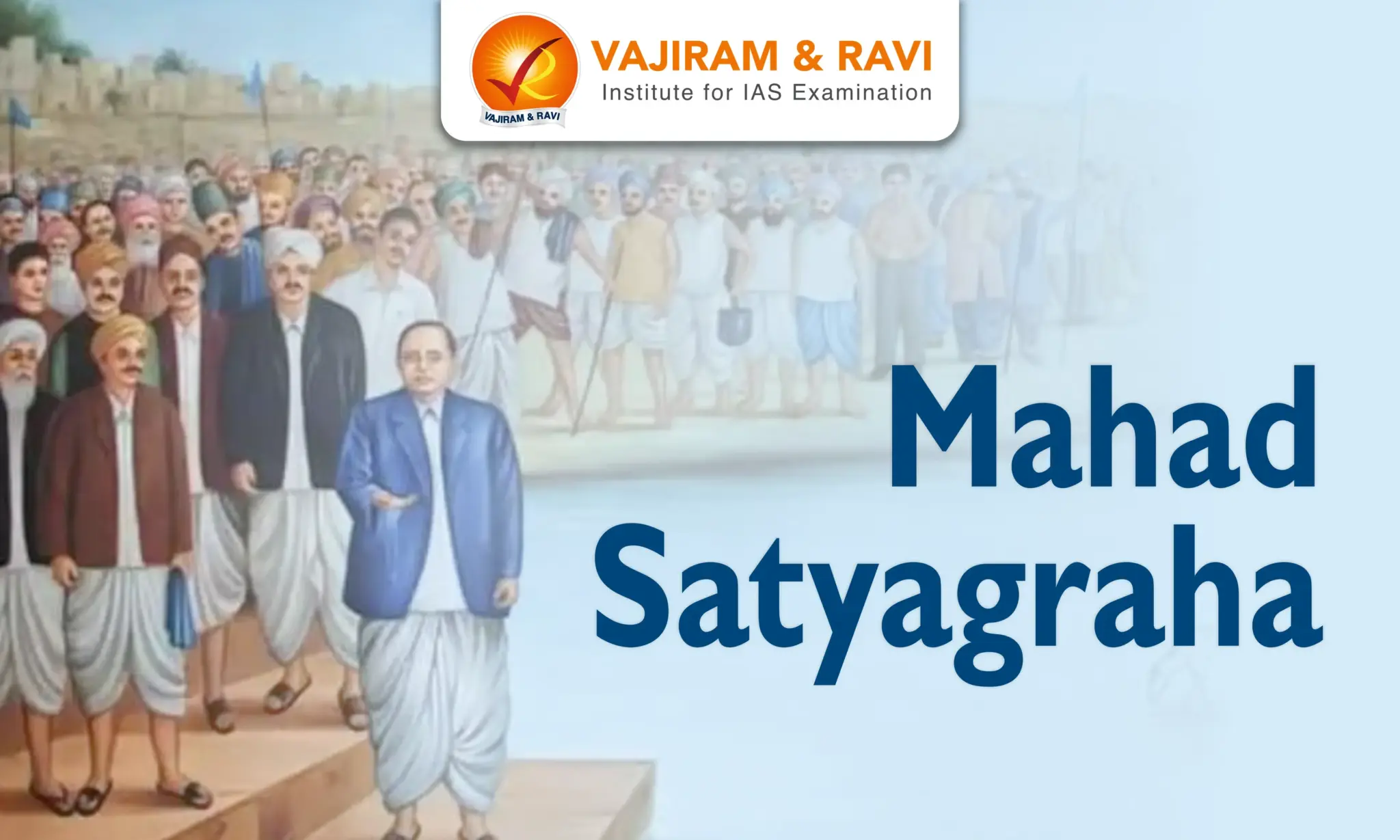The Reusable Launch Vehicle (RLV) is a sustainable launching vehicle that is being developed globally. The objective of the RLV is to reduce launch costs by increasingreusability and reliability. It can be considered as the space equivalent of a plane that takes off vertically and then glides back down to Earth. In their idealised version, RLVs have been imagined as a single staged rocket that can take off and land successfully.
India has also been developing this low-cost and reliable technology since 2010. Recently, India has successfully demonstrated the autonomous landing capability of the RLV (RLV-TD HEX-01), which is a two-stage launching system to propel the rocket into orbit and is also available for reuse.
What is Reusable Launch Vehicle?
The concept of a reusable launch vehicle is based on making the spacecraft durable enough to withstand multiple launches and landings. This necessitates the vehicle's design to be both lightweight and strong, as well as the use of materials that can withstand the extreme conditions of spaceflight.
- Features: The RLV is essentially a space plane with a low lift-to-drag ratio, requiring an approach at high glide angles that necessitated a landing at high velocities of 350 kmph.
- Examples of RLVs: Many space agencies - both private and public, are developing partial and fully reusable launch vehicles.
- New Shepherd: It is a reusable space vehicle of Amazon’s Blue Origin space agency that successfully undertook a suborbital flight in 2015.
- SpaceX’s Falcon 9: A 54-metre-tall two-stage rocket with nine engines, is capable of transporting cargo and crew to the International Space Station (ISS).
- In addition to these companies, the Japan Aerospace Exploration Agency (JAXA), European Space Agency (ESA), and ISRO have also been undertaking R&D on other aspects of reusable launch systems.
SpaceX Starship
SpaceX's Starship spacecraft and Super Heavy rocket, collectively known as Starship, is a fully reusable transportation system designed to transport both crew and cargo to space.
- Starship is the successor to SpaceX’s previous rockets: the Falcon 1, the Falcon 9, and the Falcon Heavy.
- It is capable of carrying up to 150 metric tonnes of fully reusable cargo and 250 metric tonnes of expendable cargo.
- It is the biggest and most powerful rocket ever built.
- It will also play a key role in Nasa's Artemis programme, which aims to establish a long-term human presence on the Moon.
- When it is ready to land on Earth, the ship initially re-enters the atmosphere at a 60-degree angle and then "belly-flops" to the ground in the horizontal position.
- This mode of return relies entirely on the atmosphere to slow the vehicle's descent. The downside is that, in this configuration, Starship is inherently unstable.
Evolution of Reusable Launch Vehicles in India
ISRO started working on the RLV technology in 2010 for a two-stage-to-orbit (TSTO) launch vehicle. In 2016, the RLV-TD underwent its first trial when it touched down at the pre-determined landing site in the Bay of Bengal, 425 km east of Sriharikota.
Stages of ISRO’s Launch Vehicles and RLV
ISRO’s launch vehicles typically have three or four stages. In three-stage rockets, the first or lowermost stage has a solid-fuel motor. The second stage has a liquid-fuel Vikas engine. The third and uppermost stage has a cryogenic engine that uses liquid oxygen and liquid hydrogen.
- RLV has two stages: When the fuel in the first stage runs out, the vehicle will exit and proceed to the second stage.
- Following this, the first stage will re-enter the atmosphere and land autonomously at a predetermined location.
- It will be ready to use after some maintenance.
Reusable Launch Vehicle-Technology Demonstrator (RLV-TD)
RLV-TD Programme is envisioned as a series of technology demonstration missions that serve towards realising a fully reusable Two Stage To Orbit (TSTO) vehicle.
- Objectives of RLV-TD:
- Hypersonic aero thermodynamic characterisation of wing body
- Evaluation of autonomous Navigation, Guidance, and Control (NGC) schemes
- Integrated flight management
- Thermal Protection System Evaluation
- Technologies involved: The effort to launch RLV necessitates the use of several state-of-the-art technologies.
- These include accurate navigation hardware and software, a Pseudolite system, a Ka-band Radar Altimeter, a NavIC receiver, indigenous Landing Gear, Aerofoil honeycomb fins, and a brake parachute system.
- Components of RLV-TD: It consists of a fuselage (body), a nose cap, double delta wings, and twin vertical tails. Elevons and Rudder, which are symmetrically placed active control surfaces, are also included.
- A conventional solid booster (HS9) designed for a low burn rate propelled this technology demonstrator to Mach 5.
- A Winged RLV-TD has been configured to serve as a flying test bed for various technologies utilising air-breathing propulsion (Ramjet and Scramjet) through a series of test flights.
- RLV-TD Hypersonic Experiment (HEX-01) Mission: ISRO completed its maiden RLV-TD HEX-01 mission in 2016 and successfully demonstrated critical technologies for re-entry vehicle design and flight testing.
- It was, however, a suborbital flight intended to land on the sea.
- Reusable Launch Vehicle Autonomous Landing Mission (RLV-LEX): It was the autonomous landing experiment and was tested recently in April 2023 in Chitradurga, Karnataka.
- The autonomous landing was carried out under the same conditions of a Space Re-entry vehicle's landing.
- In LEX, the RLV was carried to an altitude of 3-5 km by helicopter and released at a distance of approximately 4-5 km ahead of the runway.
- The RLV-LEX glided towards the runway and performed a conventional autonomous landing with landing gear.
- While the LEX experiment required a precise landing on a runway, RLV-TD (HEX1) involved the vehicle landing on a fictional runway over the Bay of Bengal (over the sea).
- RLV Orbital re-entry Experiment (ORE): ISRO is currently working on ORE.
- In ORE, a wing body called an Orbital Re-entry Vehicle (ORV) will be launched into orbit by an ascent vehicle derived from the existing GSLV and PSLV stages.
- It will stay in orbit for a predetermined period, then re-enter and land autonomously with landing gear on a runway.
Significance of Reusable Launch Vehicle
The following are the implications of reusable launch vehicles:
- Cost-effective: With costs being a major deterrent to space exploration, a reusable launch vehicle is viewed as a low-cost, dependable, and on-demand mode of accessing space.
- The use of Two staged RLVs can reduce the cost of a launch by nearly 80% of the current cost.
- Advanced Technologies: It has the potential to serve as the foundation for advanced technologies such as hypersonic flight, autonomous landing, return flight experimentation, powered cruise flight, and air-breathing propulsion systems such as the Scramjet Propulsion Experiment (SPEX).
- Significance for India: The successful experiment by ISRO is a step toward ensuring that the country does not lag in an important scientific and strategic area.
- Mastery of the best technologies and use of the most advanced systems will also commercially help ISRO, which currently has a meager share of the global space launch market.
Challenges of Reusable Launch Vehicles
RLV development is still in its early stages, so adequate R&D is required. Several countries are collaborating to make it a tough platform. The following are the most significant development gaps in reusable launch vehicles:
- Additional requirements: Reusability necessitates adding additional systems, landing gear, or fuel to return and land.
- As a result, the rocket's mass and dimensions will increase, resulting in increased launch preparation requirements.
- High cost for reusing: Every time the reusable stage is used, it requires maintenance and repairs, and the costs of restoring can sometimes be greater than those of creating a new mission phase.
- Limited time use: Every component that can be reused has a time limit after which it can no longer serve its intended purpose.
Last updated on November, 2025
→ Check out the latest UPSC Syllabus 2026 here.
→ Join Vajiram & Ravi’s Interview Guidance Programme for expert help to crack your final UPSC stage.
→ UPSC Mains Result 2025 is now out.
→ UPSC Notification 2026 is scheduled to be released on January 14, 2026.
→ UPSC Calendar 2026 is released on 15th May, 2025.
→ The UPSC Vacancy 2025 were released 1129, out of which 979 were for UPSC CSE and remaining 150 are for UPSC IFoS.
→ UPSC Prelims 2026 will be conducted on 24th May, 2026 & UPSC Mains 2026 will be conducted on 21st August 2026.
→ The UPSC Selection Process is of 3 stages-Prelims, Mains and Interview.
→ UPSC Result 2024 is released with latest UPSC Marksheet 2024. Check Now!
→ UPSC Prelims Result 2025 is out now for the CSE held on 25 May 2025.
→ UPSC Toppers List 2024 is released now. Shakti Dubey is UPSC AIR 1 2024 Topper.
→ UPSC Prelims Question Paper 2025 and Unofficial Prelims Answer Key 2025 are available now.
→ UPSC Mains Question Paper 2025 is out for Essay, GS 1, 2, 3 & GS 4.
→ UPSC Mains Indian Language Question Paper 2025 is now out.
→ UPSC Mains Optional Question Paper 2025 is now out.
→ Also check Best IAS Coaching in Delhi
Tags: quest reusable launch vehicle






















